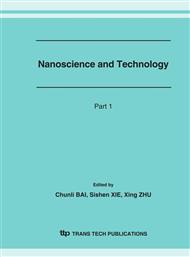p.275
p.279
p.283
p.287
p.291
p.295
p.299
p.303
p.307
Study of the Electrical and Tribologic Properties of CNTs-HDPE Composites
Abstract:
CNTs-HDPE composites were prepared by the blend method. SEM was used to investigate the microstructure of the composites. The electrical and tribologic properties of the composites were studied respectively. The experiments showed that the percolation threshold of composites is about 3wt%, which is much lower than that of the carbon black-HDPE composites, and that the temperature-dependent electrical conductivity of composites had the PTC and double NTC characters, being also different from the carbon black-HDPE composites. These results are due to the unique structure and characters of CNTs. The frictional experiments demonstrated that the addition of CNTs would enhance the wear resistance of the composites.
Info:
Periodical:
Pages:
291-294
Citation:
Online since:
March 2007
Authors:
Keywords:
Price:
Сopyright:
© 2007 Trans Tech Publications Ltd. All Rights Reserved
Share:
Citation:


